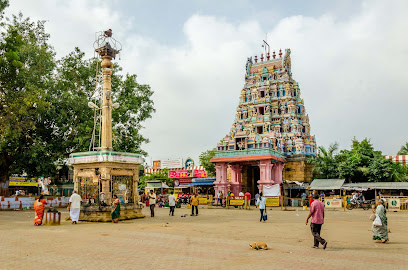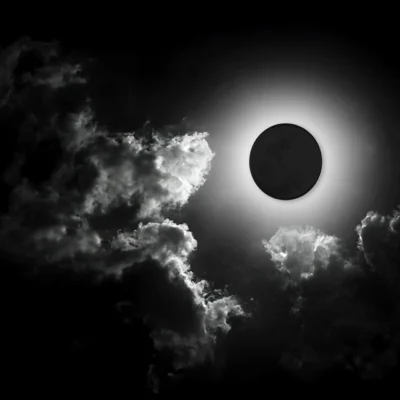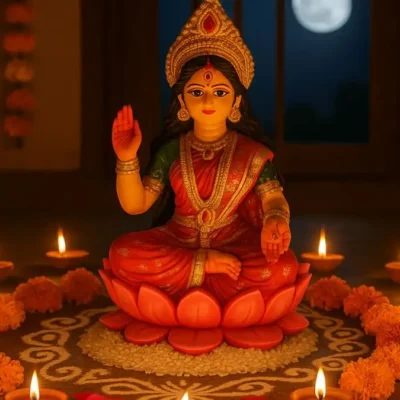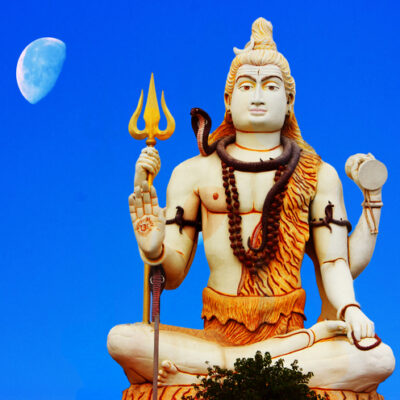Perur Pateeswarar Temple, Coimbatore

Address
Perur Pateeswarar Temple, Siruvani Main road, Perur, Coimbatore District- 641010 Phone: 422-2632 452, 2607991, 0260689 Mobile: 94881 55164.
Diety
Pateeswarar Amman: Pachainayaki
Introduction
Perur Pateeswarar Temple is dedicated to Lord Shiva located at Perur, in western part of Coimbatore in state of Tamil Nadu in India. The temple is located 7 km west of the Noyyal River and has been patronized by poets like Arunagiri Nathar and Kachiyappar Munivar. Lord Shiva, known as ‘Patteeswarar’, is the presiding deity of this temple together with his consort Parvati, who is known as ‘Pachainayaki’. The deity is believed to be ‘Swayambu Lingam’ (self emerged). And this magnificent temple was built by Karikala Cholan. Perur temple’s main deity is Pateeswarar and Pachainayaki Amman. The temple architecture here is really wonderful and unique. The hall here with in the temple has rare sculptures and carvings that stand testimony to splendid work of art. This temple can be reached by road and it is about 7 kms from Coimbatore railway station and 10 kms from Gandhipuram. The Temple is considered as Thevara Vaippu Sthalam as Devaram hymns sung by Sundarar and Appar.
Puranic Significance
The origins of this temple go back to thousand years. It is mostly 2000 years old (approx) Karikala Chola is said to have built the innermost shrine of the temple. Later, the Hoysalas and the Vijayanagar kings made contributions to this temple. This Sanctum – sanctorum of this Temple was built by Karikala Chola in the early Christian era. In the ninth century, Saint Sundarar visited the temple and immortalized it in his Thevaram. In the Kongu Chola Period (11th to 13th centuries Ardha Mandapa and Maha mandapa were built and used for inscribing the details about the numerous gifts made to the temple. From 14th to 17th centuries, the Hoysalas, Vijayanagar and Nayaka kings gave endowments. The famous Kanaka Sabhai was built by Alagadri Nayak of Madurai in the 17th century. Tippu Sultan of Mysore attached half of the Inams of the temple in the 18th century. Later on, the East India Company restored it to the temple. The Swami and Amman Temples were renovated in the Middle of the 18th century and later on the Mandap of 63 Saints was built. In the 20th century, the Kalyana Mandapam and the front Mandapam were built and the tower was repaired. Historically, the surroundings of Perur date back to the Roman period as a “Treasure Trove” of Roman coins was discovered here. Perur Patteeswarar Swamy temple is the most popular temple in the city. Built by the King Karikala Cholan, this temple is situated 7 kms west of Coimbatore near river Noyyal. The presiding deity is Shiva and the ‘Swayambu Lingam’ is the idol worshipped here. This sanctum is the joint effort of the Chola, Hoysalas and Vijayanagara rulers during their reign. The greatest attraction of the temple is the ‘Kanaka Saba’ or the golden hall which is adorned by gold plated statue of Nataraja bestowing blessings upon the two sages – Gowmuni and Pattimuni. The gopurams and pillars of the hall are exquisitely carved out sculptures highlighting Dravidian architecture. The significance of Perur temple in earlier days are unfolded in the poetic creations of Arunagiri Nathar and Kachiyappar Munivar. The temple stands on the banks of the holy river Noyyal called ‘Kanchi Manadi’ by the locals. Pilgrims from all over visit this spot to pay homage to their ancestors. It is believed that the mortal remains of the dead turn into white stones after about 144 days. Current Structure was built by Palayakarar kings also known as Sitrarasars under Raja Raja Cholan. Divine cow Kamadhenu performed severe penance on Lord Shiva seeking the post of Lord Brahmma to take up the Creation work. It was pouring its milk on the Shivalinga here hidden in an anthill. Its calf Patti in a playful mood hit the anthill and demolished it. Shocked Kamadhenu fell at the feet of Lord and sought His pardon. Appearing before the divine cow, Lord said that He was only pleased with the calf. Lord further said that the place was the first among the salvation sthalas to His devotees and that He would grant the creation boon to Kamadhenu at Tirukaruhavur and advised it to perform penance there. Lord mercifully said that this place (Perur) would be praised as Kamadenupuram and Pattipuri after name of the calf and that He would stay in the place as Patteeswarar. The foot print scar of divine cow Kamadhenu is still visible on the head of Lord Patteeswarar. The heads of the eight directions are figuring in the Vimana of the sanctum sanctorum. There is a tamarind tree in front of the temple the seeds of which do not germinate if sown, indicating the truth that those pray to Lord Patteeswarar will attain total salvation and will be freed from the cycle of births and deaths. The Palm Tree is praised as Irava Panai meaning that it would never fall down meaning that those devoted to Lord Patteeswarar would ever be standing straight with name and fame. The bones of those dead, when placed in the Noyyal River flowing near by the temple turn white stones, it is said. It is believed that Lord utters the five lettered Na Ma Shi Va Ya mantra on the ears of those dead and takes them with Him. It is a wonder that no germs could be found in cow dung around this place.
Special Features
This temple has several gopurams and halls, famous of which is the one with the golden statue of Nataraja. The pillars have carvings of the various manifestations of Shiva and the ceiling has a series of stone chains. There is a Patti Vinayagar shrine, dedicated to Ganesha. The Arasambalavanar Shrine dedicated to Shiva at the spot where Shiva is believed to have performed his Thandavam under a Peepal tree. There are also statues of Gajasamhara, Veerabhadra, Bikshadana, Oordhva Thandava & Saraswathi with Veena. The sacred trees associated with temple are the Palm and tamarind trees, called Irava Panai and Pirava Puli. Culuture: This ancient place has produced apart from the Thevarams, very fine literary and historical compositions. Cholan’s PoorvaPattayam deals with the origin of the Temple and gives and account of the folk – Lore of the place. The inscriptions, ranging over a few centuries, give valuable information about the customs and manners that existed a thousand years ago. The Thirupugazh pieces of Arunagiri Nathar give an account of the Temples five centuries ago. The Perur Puranam of the Post Kachiyappar Munivar is a poem of high literary merit. Lastly, Saint Santhalinganar has left four religious books, of which “Against Killing” is a poetic masterpiece of moral and philosophical content.
Festivals
Every year during March the Panguni Uthiram festival is celebrated in a grand manner with thousands of devotees thronging this shrine to offer their prayers to Lord Pateeswarar. Other important Festival is also conducted at this temple with conventional rituals. The annual festival is celebrated in Panguni month. In the Tamil month Karthikai Shankabishekam is conducted in the morning and Annabishekam in the evening. The Natyanjali (festival of dance) is celebrated with large number of classical dancers participating in the performance during September every year. Arudra Dharsanam is conducted during Margali month with large gathering of devotees offer their prayers and to receive the Lord’s blessings.
Century/Period/Age
1000 to 2000
Managed By
Hindu Religious and Charitable Endowments (HRCE)
Nearest Bus Station
Coimbatore
Nearest Railway Station
Coimbatore Junction
Nearest Airport
Coimbatore







